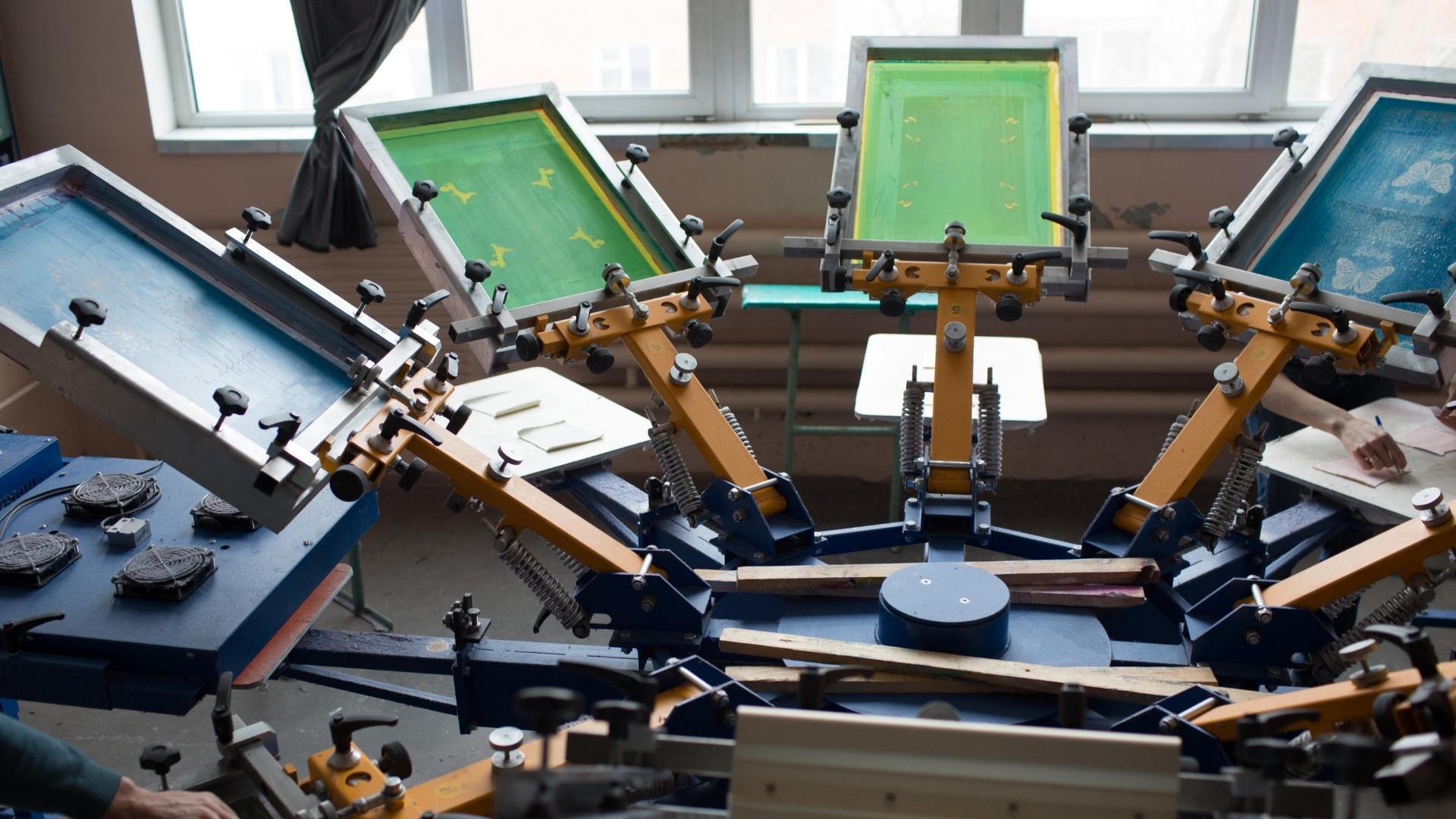The Vital Guide to Recognizing Screen Printing and Its Versatile Makes use of
Screen printing has an abundant history that dates back to ancient times, developing right into an advanced method made use of across various industries today. This overview explores the intricacies of the screen printing process, outlining its applications in fashion, home, and advertising design - 10:9 Design Abilene. Understanding these basics can open up creative capacity for both creative and industrial jobs. The adhering to sections will expose necessary ideas and strategies to improve one's screen printing undertakings
The History of Screen Printing
Although screen printing has roots that map back centuries, its development mirrors the imaginative and technological innovations of various cultures. Coming from in ancient China, the strategy was originally utilized for decorating fabrics and later spread to Japan, where it ended up being indispensable to Ukiyo-e woodblock printing. The method changed to Europe in the 18th century, where it acquired popularity among artisans and commercial printers. The invention of picture emulsion in the 20th century changed screen printing, enabling more elaborate designs and better efficiency. Artists like Andy Warhol even more moved its popularity, using the tool to develop famous jobs that blended commercialism and art. By the late 20th century, screen printing had developed itself as a functional technique, utilized in fashion, advertising, and art. Today, it continues to advance, incorporating digital modern technology and broadening its applications across numerous industries.
The Screen Printing Refine Explained
Screen printing transforms imaginative visions into concrete layouts via a series of accurate steps. A photo is created and after that moved onto a screen, normally made of fine mesh material extended over a framework. A light-sensitive emulsion is put on the screen, which is revealed to light, solidifying in areas not covered by the picture. After rinsing the unhardened emulsion, a stencil is formed.
Next, the screen is placed over the substratum, whether it be textile, paper, or an additional product. Ink is then pressed through the open areas of the stencil making use of a squeegee, transferring the design onto the substratum below. This procedure can be repeated for multiple colors, calling for different displays for every hue. Ultimately, the printed thing is treated making use of heat to assure the ink sticks correctly, leading to a durable, vibrant design on-line.
Types of Screen Printing Techniques

In addition, specialized strategies, such as discharge screen printing, eliminate dye from the fabric to produce softer prints, while foil screen printing uses metallic foil to accomplish a glossy surface (10:9 Design Embroidery). Each technique provides distinct qualities, accommodating numerous innovative requirements and manufacturing scales, inevitably broadening the opportunities within the screen printing domain name
Applications of Screen Printing in Numerous Industries

Additionally, the signage and advertising sectors utilize screen printing for producing eye-catching screens and banners. This method enables bold shades and elaborate layouts that catch focus. In electronic devices, screen printing is employed for using conductive inks to circuit boards, necessary for element links. The home style market accepts screen printing to produce unique designs on textiles and wall art. In general, screen printing functions as a crucial device across diverse fields, boosting items with customized and aesthetically attractive graphics.
Tips for Effective Screen Printing Projects
While carrying out a screen printing task, mindful focus to information can considerably boost the last end result. Choosing top notch products is crucial; this consists of the screen, inks, and substrates. Using appropriate mesh counts can influence ink deposition and detail resolution. Preparation is just as essential; comprehensive cleansing of screens and proper exposure times assure click here to find out more crisp prints.
Next, accurate enrollment is important for multi-color prints. Making use of placement devices can assist accomplish accurate layering. Additionally, screening prints on scrap materials prior to manufacturing helps determine prospective concerns without squandering sources.

Regularly Asked Inquiries
What Materials Are Ideal for Screen Printing on Fabric?
Cotton and polyester blends are ideal for screen printing on material as a result of their toughness and ink absorption. Furthermore, specialty fabrics like silk or canvas can produce unique structures and coatings, improving the general layout high quality.
How Do I Tidy and Maintain Screen Printing Equipment?
To cleanse and keep screen printing devices, one need to routinely clean view screens with proper solvents, inspect mops for wear, lubricate moving components, and store all products in a dry, dust-free setting to extend their lifespan.
What Are the Ecological Influences of Screen Printing?
Screen printing can have significant environmental effects, including chemical waste from solvents and inks, water use during cleaning processes, and power consumption. Sustainable techniques and green products are crucial for lessening these negative results.
Can Screen Printing Be Done in your home Properly?
Screen printing can be successfully done at home with the ideal products and strategies. Enthusiasts can produce quality prints, though success relies on their ability level, tools, and understanding of the procedure included.
What Are the Costs Related To Starting a Screen Printing Company?

Starting a screen printing organization involves prices for equipment, products, and office. Preliminary expenditures generally range from a couple of hundred to several thousand bucks, depending on the range, high quality of equipment, and wanted manufacturing capacity.
Screen printing has an abundant history that dates back to old times, advancing into an innovative method utilized across numerous markets today. An additional method, rotary screen printing, uses round screens, assisting in constant printing on fabric rolls, therefore boosting effectiveness for large manufacturings. Furthermore, specialized methods, such as discharge screen printing, eliminate dye from the fabric to produce softer prints, while foil screen printing applies metal aluminum foil to accomplish a shiny coating. In the style market, screen printing is widely used to develop vivid styles on clothing, making it possible for brands to display their distinct designs. Cotton and polyester blends are optimal for screen printing on fabric due to their resilience and ink absorption.